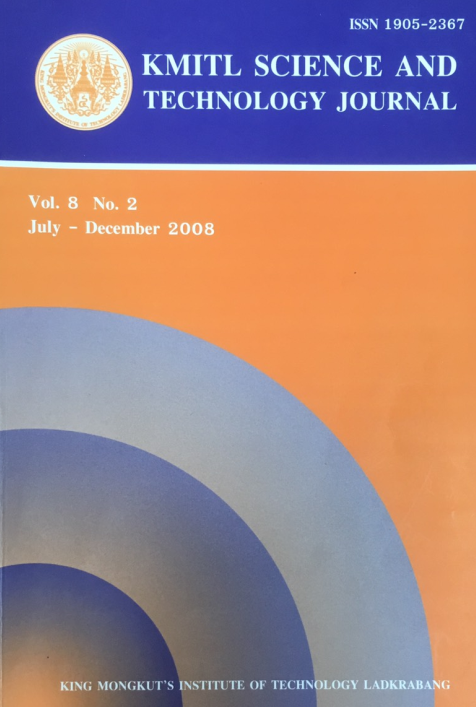Isolation and Characterization of Effective Bacteria for Solid Waste Degradation for Organic Manure
Main Article Content
Abstract
The present investigation was conducted to find out the utilization of effective bacteria for solid kitchen waste degradation as organic manure or compost. Ten garbage samples were collected from different potential habitat of Kushtia and Jhenaidha regions of Bangladesh for isolating the effective garbage degrading bacteria. Three bacterial sample strains named as NAIUL, BCDump and BCSS (2) were isolated and cultured on Nutrient Agar and Czapek-Dox-Agar media. Characterizations of these strains were also studied by visual observation of colony, microscopic observation and biochemical tests identified the specific bacteria namely Xanthomonas spp., Bacillus sp., and Pseudomonas sp. from NAIUL, BCDump and BSS (2) strains, respectively. Changes of color, odor, weight loss, volume loss, temperature and pH of decomposing garbage were noted for selecting the most effective strain. The highest decomposition activity in term of weight loss and volume loss was shown by suspension of BCDump sample strain. To observe the effect of various additives on decomposition, various concentrations (5 %, 10 % and 15 %) of sucrose and molasses solution were used along with bacterial suspension. It was observed that 15% molasses treatment showed the best performance over the other treatments using BCDump sample strain. Decomposed garbage was used as compost or organic manure to observe their effects on biomass production (fresh weight basis) of potatoes (Solanum tuberosum). Garbage decomposed by all strains was used as organic manure. From the present investigation, it can be concluded that useful bacteria might be isolated from the surrounding environment for friendly bioconversion of solid organic waste.
KEYWORDS: bacteria, characterization, soil waste, organic compost
E-mail: f.ewha@yahoo.com
Article Details
Copyright Transfer Statement
The copyright of this article is transferred to Current Applied Science and Technology journal with effect if and when the article is accepted for publication. The copyright transfer covers the exclusive right to reproduce and distribute the article, including reprints, translations, photographic reproductions, electronic form (offline, online) or any other reproductions of similar nature.
The author warrants that this contribution is original and that he/she has full power to make this grant. The author signs for and accepts responsibility for releasing this material on behalf of any and all co-authors.
Here is the link for download: Copyright transfer form.pdf
References
[2] World Bank. 1998 Sectoral Analysis: Solid Waste Management. The World Bank, Washington D.C.
[3] Bangladesh Bureau of Statistics (BBS). 1997 Bangladesh population census 1991, Urban Area Report Dhaka, Statistics Division, Ministry of Planning and Government of Bangladesh.
[4] National Institute of Local Government (NILG) and Local Government Engineering Department. 2002 Pouroshava Statistical Yearbook of Bangladesh, 1998–99. NILG, Dhaka.
[5] Cointreau, S. 1982 Environmental management of urban solid wastes in developing countries, A Project Guide. Urban Development, World Bank, Washington, DC.
[6] Arlosoroffs, 1982 WB/UNDP Integrated resource recovery project: Recycling of wastes in developing countries, In: Appropriate Waste Management for Developing Countries. Kriton Curi(ed.). Plemum Press, New York.
[7] Blight, G. E. and Mbande, C. M. 1996 Some problems of waste management in developing countries, Journal of Solid Waste Technology and Management, 23(1), 19–27.
[8] Zurburgg, C. 2002 Urban solid waste management in low-income countries of Asia how to cope with the garbage crisis, Scientific Committee on Problems of the Environment (SCOPE). Urban Solid Waste Management Review Session, Durban, South Africa.
[9] https://www. sdnpbd. org/sdi/ international_ days/wed/2005/index.html
[10] Parr, J. F. and Hornick, S. B., 1992 Utilization of municipal wastes, In: Soil Microbial Ecology: Applications in agricultural and environmental management,pp. 545–559. F.B. Metting (ed.) Marcel Dekker, Inc., New York, U.S.A.
[11] Alexander, M. 1961 Introduction to Soil Microbiology, John Wiley and Sons, Inc, New York.
[12] Berkeley, R. C. W. and Campbelt, R. 1972 Microbial nutrition and the influence of environmental factors on microbial growth and other activities, In: Microorganism: Function, Form and Environment. Hawker, L.E and Linton, A.H.(eds), Edward Arnold(Publisher limited), London.
[13] Frobisher, M. 1961 Fundamentals of Microbiology, Charles E. Tuttle, Tokyo, Japan.
[14] Burges, A. and Raw, F. 1977 Soil Biology, Academic Press, New York.
[15] Collins, C. H. and Lyne, P. M. 1987 Microbiological Methods, 5th ed., Butterworth & Co.Ltd., London.
[16] Harold, J. B. 2002 Microbiological Applications. Laboratory Manuals in General Microbiology, 8th ed., McGraw - Hill Higher Education.
[17] United Nations Environment Programme (UNEP). 1996 International Book on Environmentally Sound Technologies for Municipal Solid Waste Management, UNEP Technical Publication 6.
[18] Sultana, S. 1997 Isolation of cellulolytic microorganisms and their activities, M. Phil. Thesis, Institute of Biological Science. University of Rajshahi, Bangladesh.
[19] Kaplovsky, A. J. 1952 Volatile acid production during digestion of several industrial wastes,Sewage and Ind. wastes, 24, 194–201.
[20] Hoitink, H. A. J. 1980 Composted Bark, A lightweight growth medium with fungicidal properties, Plant Disease, 64, 142–147.
[21] Collins, C. H. and Lyne, P. M. 1987 Microbiological Methods, 5th ed., Butterworth & Co.Ltd., London.
[22] https://www.vmirl.vmi.edu/ev/Paper% 20Sessions/Early%20Bird/Absracts/Harper_ Abstract.htm.
[23] Moqsud, M. A. 2003 A study on composting of solid waste. M.Sc. Eng.Thesis, Department of Civil Engineering, BUET, Bangladesh.
[24] Pleczar, M. J., Chan, E. C. S. and Krieg, N. R. 2004 Microbiology. Tata MCGraw-Hill Puplishing Co. Ltd, New Delhi.
[25] Rahman, M. H. 2004 Composting of solid waste in Bangladesh. Proceedings of the 19th International Conference on Solid Waste Technology and Management. Philadelphia, USA.


